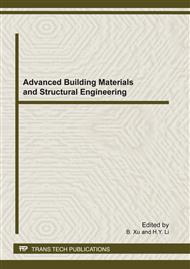[1]
Liao Hongen, Noguchi Masafumi, Maruyama Takashi, etc.: Automatic focusing and robotic scanning mechanism for precision laser ablation in neurosurgery. In: IEEE/RSJ 2010 International Conference on Intelligent Robots and Systems, IROS 2010 - Conference Proceedings, pp.325-330. IEEE Computer Society, Taipei(2010).
DOI: 10.1109/iros.2010.5652067
Google Scholar
[2]
Masini Andrea, Diani Marco, Corsini Giovanni, etc.: Automatic focusing techniques for infrared sensors. In: Proceedings of SPIE, vol 6737, SPIE Europe. SPIE, Florence, Italy( 2007).
DOI: 10.1117/12.738038
Google Scholar
[3]
Lin Sheng-Fuu, Lin You-Tasi, Su Chien-Kun.: An automatic focusing algorithm. International Journal of Imaging Systems and Technology. 12, 235-238(2002).
Google Scholar
[4]
Bao Ge-Tang, Zhao Hui, Tao Wei.: Algorithm's study on automatic focusing for image measurement technology. Shanghai Jiaotong Daxue Xuebao/Journal of Shanghai Jiaotong University. 39, 121-124 (2005)(in Chinese).
Google Scholar
[5]
Jianhua WANG, Huaqin DENG, Yunlong DENG.: Research on real time focusing approach in low signal-noise-ratio environment. OPTICAL TECHNOLOGY. 36, 932-935(2010)(in Chinese).
Google Scholar
[6]
Memmolo P., Distante C., Paturzo M., etc.: Automatic focusing in digital holography and its application to stretched holograms. Optics Letters. 36, 1945-1947(2010).
DOI: 10.1364/ol.36.001945
Google Scholar
[7]
Zhang Tengfei, Xiao Zexin, Xiao Ran.: Research on microscopy automatic focusing based on gradient function. In: SPIE, vol 7513, Chinese Optical Society (COS). SPIE(2009).
Google Scholar
[8]
Qi LI, Zhihai XU, Huajun FENG.: Autofocus area design of digital imaging system. ACTA PHOTONICA SINICA. 31, 63-66(2002)(in Chinese).
Google Scholar
[9]
Park Min-Chul, Cheoi Kyung Joo.: Automatic focusing attention for a stereo pair of image sequence. In: ACM International Conference Proceeding Series. Vol 403, pp.1185-1190. Association for Computing Machinery, Seoul, Korea(2009).
DOI: 10.1145/1655925.1656141
Google Scholar
[10]
Chen Chwan-Hsen, Feng Teng-Lang, Weng Chih-Wei.: Adaptive sharpness function for real-time passive automatic focusing systems using wavelet transformation. Zhongguo Hangkong Taikong Xuehui Huikan/Transactions of the Aeronautical and Astronautical Society of the Republic of China. 37, 253-260(2005).
Google Scholar
[11]
Shi Bao-Shan, Zhang Fa-Quan, Lu Li-Ping.: A method for threshold selection in edge width detection of objects in the image. In: 2009 International Conference on Signal Processing Systems, ICSPS 2009. vol, pp.402-405. Singapore, IEEE Computer Society(2009).
DOI: 10.1109/icsps.2009.114
Google Scholar


